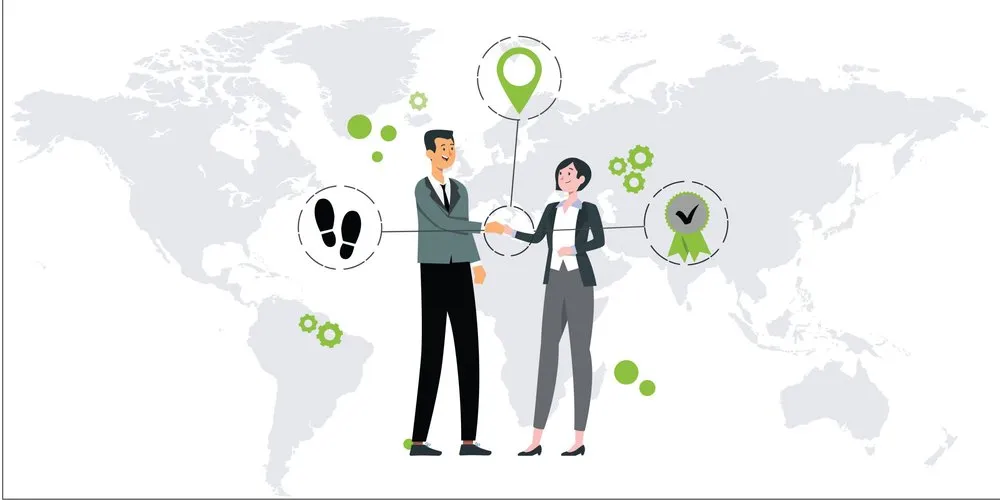Modern sales territory mapping techniques have provided an effective weapon to reveal key business insights about organizations' sales performance. Sales metrics displayed on geographic maps with data overlays can substantially improve local sales leader effectiveness and also help corporate understand and analyze trends and selling behaviors of their salesforce. Tableau has some great mapping features with publicly available data overlays that can be very useful. Qlikview also has a basic geographic heatmap capability. Google Maps API is one of the more advanced products with great mapping capabilities however requires non-trivial api integration skills.
Case 1: Assigned Territory vs Actual Footprint
A client had an account-based sales model with clearly defined geographic boundaries for each of its reps. Reps were however not restricted from selling outside their assigned territories. In some regions, this led to significant outside-territory sales by specific reps leading to resentment and unhealthy competition amongst their peers. Incentius decided to use sales territory mapping to visualize the assigned territory of reps vs their sales footprint. Fig 1 shows a specific rep's sales footprint. All sales within their assigned sales territories are tagged in green and out-of-territory sales are tagged red. The size of the markers indicates the volume of sales in that specific zip code. These figures revealed reps who were clearly selling significant volumes in distant zip codes. Such analysis assisted the company in reinforcing the message and aligning salespeople's efforts to corporate objectives.

Fig 1. Assigned Territory vs Actual Footprint
Case 2: Inbound vs outbound telesales effectiveness
A client wanted to understand how effective inbound vs outbound telesales were in different geographies. Inbound telesales is driven by local marketing efforts around the customer's location. Incentius generated a geographic sales map to indicate the split between inbound sales and outbound sales. The intensity of the color in Fig. 2 displays the bias towards inbound telesales in that specific geography. This analysis helped the client in identifying opportunity areas for improving local marketing strategy and spend.
 Fig 2 : Intensity of green indicates higher % of inbound sales
Fig 2 : Intensity of green indicates higher % of inbound sales
Case 3: Identifying and harnessing high potential areas.
A client sought to understand their existing sales scenario and penetration to narrow down and design a focused sales strategy. Incentius created a sales territory map with a data overlay of sales potential (calculated using multiple parameters) of different territories against actual sales of the client. This analysis helped them gauge how effectively the potential of territories was being exploited. Using Fig 3. we identified territories with high sales potential but low sales. Sales potential is represented by the intensity of the color. Sales are indicated by markers with colors varying from red to green. Red and green represent low and high sales respectively. This analysis helped the client visualize the untapped potential in their sales territories and refocus sales efforts in less exploited territories.
 Fig. 3 Intensity of purple indicates higher sales potential
Fig. 3 Intensity of purple indicates higher sales potential
This is only the tip of the iceberg when it comes to sales territory mapping. Such analysis can be applicable across industries and requires a thorough understanding of the client's selling processes. Incentius can help analyze a sales territory's drive-time for a salesperson with respect to fixed customer addresses, geographic biases in sales performance, geographic customer attrition analysis to identify support coverage issues, etc.
Follow our page on LinkedIn for more such unconventional methods in data analytics
Would you like to get a sample sales territory mapping and effectiveness analysis for your company? Please email us info@incentius.com
And if you got this far, we think you’d like our future blog content, too. Please subscribe on the right side.


 Fig 2 : Intensity of green indicates higher % of inbound sales
Fig 2 : Intensity of green indicates higher % of inbound sales Fig. 3 Intensity of purple indicates higher sales potential
Fig. 3 Intensity of purple indicates higher sales potential








